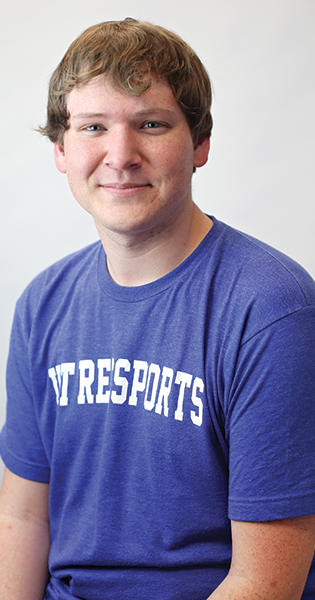Humans of the Forty Acres

If you’re on Instagram or Facebook, you’ve probably heard of Humans of New York, a social page dedicated to telling stories about the people you walk past on the street every day. Simple photos hold intriguing captions varying from relationships to religion and hardships through life. Its success has inspired others to create their own spin on the idea, like Joshua Guenther, a 4th year Computer Science and Journalism double major at The University of Texas at Austin. With Humans of the Forty Acres active on Facebook and Instagram, we connected with him to learn more about the background of the photoblog and the stories it tells.
1. What made you start the page?
Humans of the Forty Acres (HOFA) was created by three UT students in the fall of 2014. I cannot speak to the reason why they started telling students’ stories. My involvement happened to be very timely. I was brainstorming a personal project that involved portraits of UT students. While researching my idea, I found the HOFA Facebook page and realized that it was exactly what I wanted to do. I joined May of 2017. The founders were looking for someone to continue the legacy because they were graduating at the end of the Spring 2018 semester. I stepped up to fill the need.
2. Describe the best moment you've had through the Instagram page.
We currently publish our stories on Instagram and Facebook. We recently revamped posting to our Instagram after a two year period of inactivity. As a result, community interaction is still growing on Instagram.
For me, the best moments come when I am put in situations that make me uncomfortable. When talking with students, I often hear ideas that challenge my own. With HOFA, it’s my responsibility to comprehend them and I have grown a lot because of it.
My favorite post to date was published through our Facebook page on September 27th, 2017. We did an interview with Jose Estrada, a homeless man commonly seen along the Drag. When the story was published, comments for and against Estrada’s personal account steadily came in. The community painted an aggression in Estrada that ours left out. A lot of individuals were upset with the attached gofundme link and we received demands to delete the post altogether. The comments taught me a lot about what it is going to take to run HOFA. We are only stenographers that relay stories told by the community. People aren’t always going to agree with the stories we convey, but it’s just part of the job.
3. What is the process in creating a post?
Content is created through a five stage pipeline. We first need to contact people to interview with us. We will reach out to our network to schedule interviews with individuals they know or roam campus to conduct ad hoc interviews. During the interview stage, a interviewer and photographer document the conversation by recording the audio and photographing portraits. We aim to keep interviews between 10 to 15 minutes and focus on collecting personal accounts. Once we have the digital assets, we give members weekly interview assignments to transcribe. The transcript will then be reviewed and quotes will be extracted to form the the text portion of a post. Lastly, we will schedule when to publish the post.
Getting content through the pipeline can be a challenge. The bottlenecks to the process are getting the digital assets delivered and completing the transcripts. Once we have the transcript, posts can be completed as needed to meet the desired publishing date.
4. What is your vision for the account for the future?
I am concerned with keeping the page alive and am searching for new members to help in the process. Our team is focused on having enough content to post every weekday, but to also maintain the quality of our stories and visuals. Once we comfortably meet our baseline, I want us to branch out into more creative work. The focus has been telling good stories through text. I want to improve our portraits to aid in telling the story. We have also brainstormed conveying groups of stories around a topic and video. There are plenty of new areas for us to explore.

